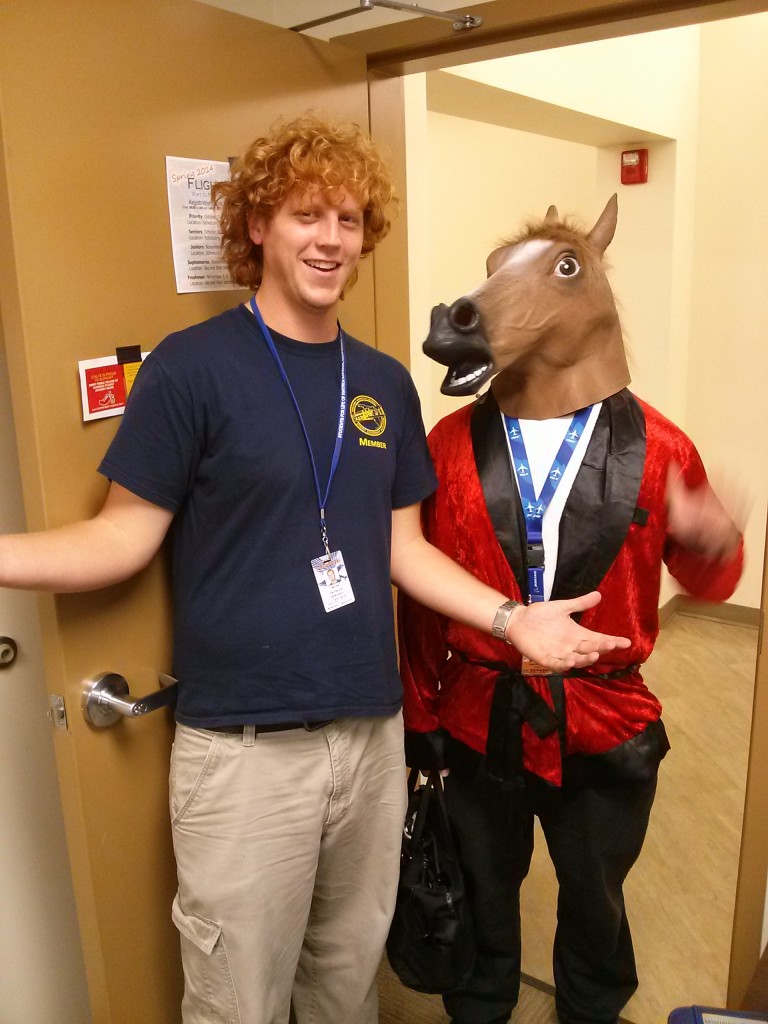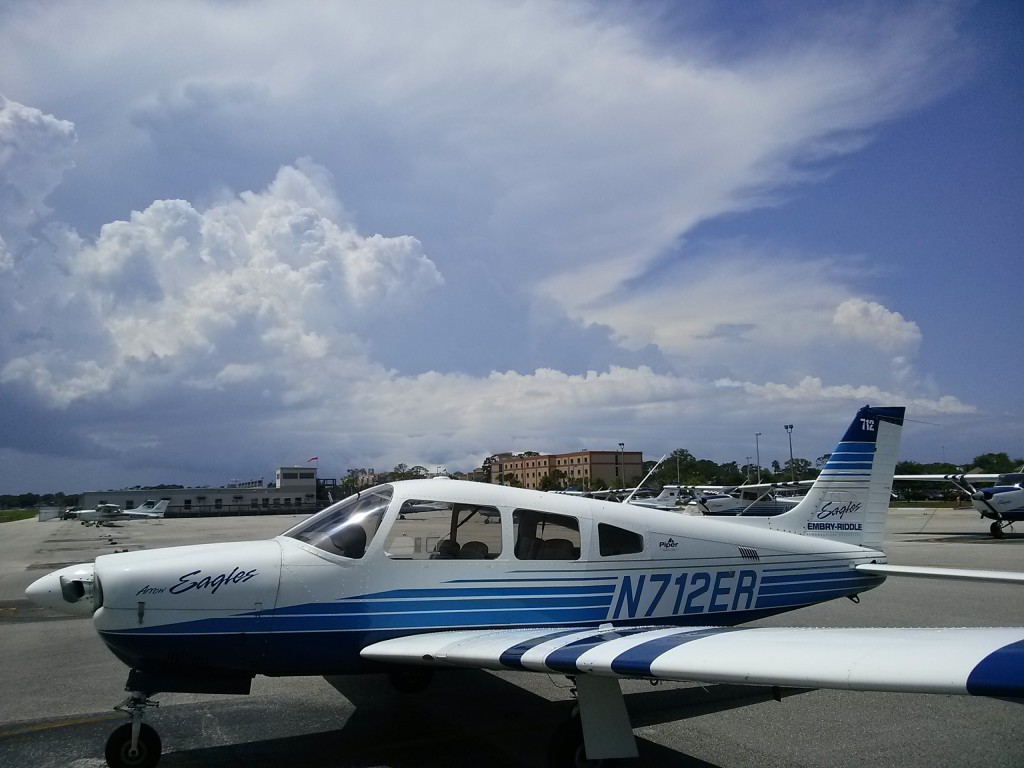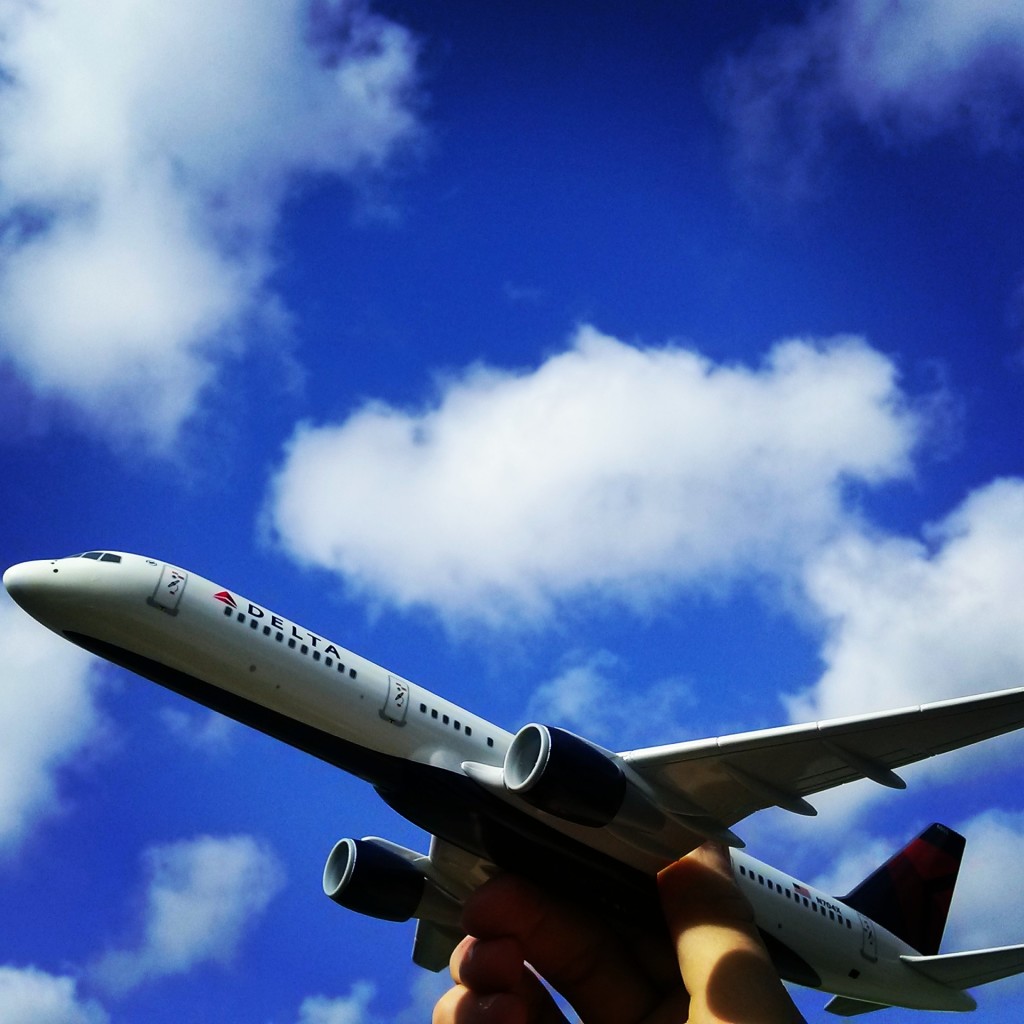
Posing with My check pilot after completion of in-house checkride on Halloween Day. The mask WAS NOT worn in-flight.
Hey there readers, I hope you are doing well:
I write to you as a newly certificated Commercial Pilot! I completed the DE checkride process on the 20th of last month and it was quite an adventure. The Commercial certificate is where you take everything you’ve learned and polish it to a professional shine. The desire is to get paid for flying one day after all!
Next I will be beginning my Flight Instructor Course (CFI). I will be staying some extra time into Christmas break to get a head start on it. The Flightline is open until the 24th. I’m staying until the 20th.
Right now we are entering the final week of regular classes here in Daytona, and everyone’s eyes are glazing over at the amount of work ahead of us. Or is that just me? I currently have two classes with grades right on the B/A margin and it’s the most aggravating feeling. I have to Ace two final tests to make those B’s become A’s. A wise man once said that the private certificate is a license to learn.Therefore, everything that proceeds from that is continual pursuit of aeronautical knowledge. Remember what I spoke of in a previous post about being a Student of the Skies? Learning never stops in an aircraft, no matter the pilot’s level of experience.
Single-Engine Commercial Course at ERAU (FA321 P141)
You will fly two aircraft: CE-172 NAV III and the PA-28r-201
- Stalls and slowflight are re-visited, with the addition of accelerated stalls and Spin Awareness. Note: Your stalls will be recovered at the onset of a buffet, full stalls are not practiced per the Commercial PTS.
- A new ground reference maneuver is introduced: Eight’s on Pylons in the Cessna.
- Three new Performance maneuvers are done: Chandelles, Steep Spirals, and Lazy-Eight’s to accompany your steep turns.
- Our old friends, the short and soft field takeoffs and landings are demonstrated again in the PA-28r. You will have 100 feet to make your point, reduced from 200 feet in the Private PTS.
- Pilotage and Deduced Reckoning, Use of Navigation systems and Radar Services, Lost Procedures, and a Diversion will be redone, refined, and re-tested from your Private level of experience.
- Emergency Operations are practiced: You will demonstrate an Emergency Decent, a Simulated Emergency Approach to landing, and the fabled Power off 180° (short approach) in the Arrow. You will also brush up on your knowledge of survival gear.
- New Aeronautical Knowledge of High-Altitude operations, Pressurization, Oxygen systems, Complex gear and prop systems, FAR’s, and Commercial Pilot Privileges will be added to the knowledge from your Instrument and Private course.
- Yes, you still have to know all the past subjects, and in finer detail!
- The End of Course process is L e n g t h y ! After a successful Pre-prog Oral, Cessna flight, and Arrow flight; you will be signed off for Checkride. First There is an ‘In-house’ checkride process which includes an Oral, a Cessna, and Arrow flight with an ERAU check Airman. After completion of the inhouse, you graduate Embry-Riddle’s Commercial flight course. But you must then pass a Designated Examiner Checkride (DE) In order to get your actual certificate from the FAA. It will cover all of the same material and maneuvers as the Inhouse but with a Certified Examiner outside of the Embry-Riddle culture. If you passed once with Riddle, you can do it again. The DE’s are really neat guys, I had Ken Luckett. Once you pass the DE, you are a commercial pilot, and will enjoy the satisfaction of being handed your signed certificate then and there.
I started working on my Commercial Rating over the Summer, so it’s been a long process and I’m very satisfied with the result. I can’t wait to see what more lies in store for me through the Flight Instructor course. Now I’ll get the opportunity to practice teaching something that is close to my heart. It is that shared experience of piloting an aircraft that keeps props turning here at Embry-Riddle. The love of flying and the desire to do it for life is what drives our Eagles to soar.
Are you thinking of looking into ERAU? well I implore you to take your first step right now. Send me an email with any questions you have and I can point you in the right direction.






